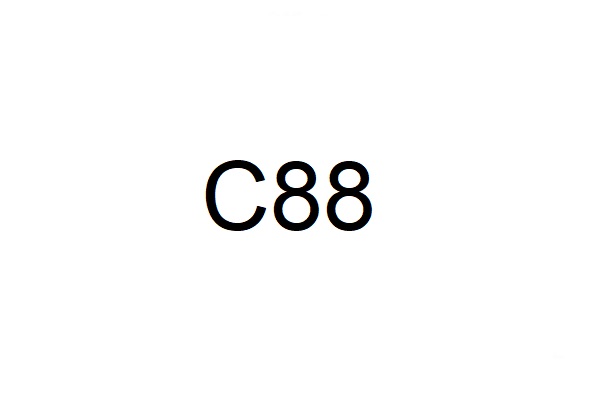Zde je to více informací o dokumentu C88.
1. Co je dokument C88 z Wikipedie?
Jediný administrativní dokument (SAD), známá také jako forma C88 ve Velké Británii, je hlavní celní formou používanou v mezinárodním obchodu do nebo z celní unie Evropské unie. Obchodníci a agenti mohou využít SAD k tomu, aby pomohli s prohlášením importu, exportu, tranzitu a statusu komunity v situacích manuálního zpracování. Používá se pro obchod EU se zeměmi mimo EU a pro pohyb zboží mimo EU v EU a nahradil různé národní formy používané mezi členskými státy před jejím zavedením v roce 1988.
SAD legislativa potřebovala, aby se plně zohlednila dnešního prostředí a přizpůsobila se vývoji, ke kterému došlo od jeho založení. Nařízení 2286/2003 to provedla zavedením radikální modernizace sběru dat na celních prohlášeních EU.
SAD se rozpadne na 54 krabic; Plná verze přichází v 8 dílech pro použití v různých bodech obchodního procesu; Viz také alternativní verze formuláře C88A.
SAD může být vyplněn příjemcem nebo agentem, který je zastupuje.
Všechny pokyny k dokončení jediného administrativního dokumentu jsou uvedeny v delegovaném nařízení (EU) 2016/341 ze 17. prosince 2015.
2. Co je dokument C88 ze základny agenta pro seniory na jejich bohaté zkušenosti?
Jednoduše řečeno, C88 je dokument Customs Import, také nazývaný formulář pro sjednocené prohlášení EU. Celní úřady poskytnou dokumenty C88 pro celní odbavovací společnosti. Po dokončení podnikání je může prodejce požádat o dokumenty C88. Je třeba poznamenat, že C88 pochází ze celní odbavovací společnosti a jsou informacemi poskytované celní odbavovací společností.
Pokud chcete získat povolení od celního orgánu ke zpracování nebo používání zboží, musíte předložit “Jediný administrativní dokument” (Jediný administrativní dokument, SAD pro krátké, společné pro import, export a tranzit, také známý jako celní forma C88 ve Velké Británii).
Podle “ES celní kód” a “Nařízení EC č. 2454/93”, ve všech členských státech EU, “C88” by měl být použit pro celní prohlášení. The “Formulář sjednoceného prohlášení EU” má osm kopií, první až třetí kopie používají exportní země a čtvrtá až osmá kopie sledují zboží.
Bez ohledu na formulář elektronického prohlášení nebo formuláře pro deklaraci papíru poté, co celní úřad přijme prohlášení, vydá deklarovi jedinečné číslo prohlášení. Formát je: třímístný kód portu, šestimístné číslo (včetně 0), jedno písmeno, šestimístné datum přijetí deklarace.
Podle práva EU by celní prohlašování měl být trvalým obyvatelem EU nebo společnosti s trvalým místem podnikání nebo registrovanou kanceláří v EU. Pokud se však jedná o tranzitní prohlášení, dočasné dovozní prohlášení nebo pouze příležitostně prohlašuje dovážené zboží jako deklarant (neprovádějící pravidelné dovozní činnosti), toto omezení není osvobozeno.
“C88 Dokumenty” může být dovozcem nebo jeho agentem předložen celním orgánům.
Existují dva typy agentury:
(1) Přímá agentura:
Agent prohlašuje jménem jistiny ve jménu jistiny (ředitel nese odpovědnost za placení daní a poplatků).
(2) Nepřímá agentura:
Agent prohlašuje jménem jistiny ve svém vlastním jménu (společně a seručně je povinen jak jistina, tak agent, aby platili daně a poplatky).
Několik základních prvků dokumentů pro deklaraci C88
1. import jedinečný identifikační kód:
Číslo položky Každá prohlášení o importu bude reagovat na jedinečný identifikační kód importu, který je obvykle v horní části formuláře deklarace.
Od 1. dubna 2018 implementovalo Spojené království předpisy zámořských skladu a vyžadovalo, aby zámořské sklady zaznamenaly vstupní číslo každého vstupu zboží od svých zákazníků. Stojí za zmínku, že tento identifikační kód je také jediným důkazem pro zákazníka, který získal příslušné dokumenty z celních úprav.
2. Export: Export
Obecně lze říci, že informace vývozce budou zobrazeny na seznamu C88, což je v souladu s vývozcem na konosamentu.
3. dovozce: příjemce
Pokud jde o dovozci, musí společnosti pečlivě zkontrolovat a zajistit, aby bylo přesné číslo EORI a hlavní tělo vyplněné společnosti.
4. deklarant: Declare
Jako celní odbavovací společnost cílového portu musí deklarovatel uchovávat údaje o celním odbavení pro každou zásilku a ponechat příslušné informace po dobu nejméně 6 let. Pro společnosti elektronického obchodování, jejichž hlavním orgánem je země mimo EU, může celní odbavovací společnost třetích stran předložit pouze prohlášení na zvyky cílového portu.
Metoda prohlášení je odlišná a výsledné odpovědnosti jsou také odlišné. Obecně existují dva způsoby:
1). Přímé prohlášení přímého zastoupení:
Enterprise opravňuje společnost celní odbavení k dokončení prohlášení jménem podniku. Pokud podnik podepíše autorizační dopis společnosti celní odbavení, budou existovat daňové problémy nebo související problémy s produktem. Předmětem prohlášení je samotný podnik a společnost celních odbavení nemusí nést související společné a několik závazků.
2). Nepřímé reprezentace:
Hlavní orgán podniku a hlavní orgán celní odbavovací společnosti prohlašují společně, takže společnost celních odbavení musí nést společnou a několik závazků s hlavním orgánem podniku, včetně daňových otázek podniku.
5.Duty/Import DPH
Vezměte si jako příklad British C88. Ve spodní části formuláře prohlášení dokumentu C88 se zobrazí tarif a daň z dovozu, kterou společnost musí zaplatit. Společnost může vidět tarif a dovoz DPH, které je třeba zaplatit podle deklarované hodnoty jejich produktů a odpovídající sazby tarifů a DPH. Je to konzistentní?
Samozřejmě, pokud máte britské dokumenty prohlášení, není obtížné pochopit dokumenty pro deklarace jiných evropských zemí. Ostatní země budou mít také některé jemné rozdíly. Například formulář německé deklarace neprokazuje dovozní daně, ale pouze tarify. Specifická dovozní daň, která je třeba zaplatit, může být zajištěna pouze zvyky na konci celního odbavení. Stojí za zmínku, že tento daňový formulář je jediným poukazem na odpočty daně.
Jaká je role dokumentů C88? Když je vaše zboží vyčištěno, zvyky EU poskytne dokumenty C88 pro celní odbavovací společnosti. Po dokončení podnikání je může prodejce požádat o dokumenty C88. Prodávající kontroluje data v souboru C88, aby zkontroloval, zda je prohlášení nesprávné, nebo zda bylo číslo daně z DPH zneužito nebo zneužíváno. Pokud jsou obě data konzistentní, není problém s údaji, které deklarujete. Naopak, pokud je vaše číslo DPH odcizeno nebo zneužíváno, údaje mezi nimi budou nekonzistentní.
Pro prodejce má další bod, aby věděli, že soubor C88 si můžete stáhnout prostřednictvím celního systému poté, co zasílatel přepravce předloží dokument pro celní odbavení. Soubor C88 neznamená, že bude uvolněno veškeré zboží. Některé předběžné zboží může být stále na moři. I když existuje dokument C88, může být zboží stále zkontrolováno celními úřady poté, co dorazí do přístavu.
Chápeme daňový zákon C88 jako počáteční návrh zákona vydaného zámořským zvykem za to, kolik daně musí prodejce zaplatit za zboží. Nemůže představovat uvolnění zboží, ani ho nelze použít k odpočtu daně. C88 však má podrobné informace o daních, které musí zboží zaplatit.
Pokud přeshraniční prodejci potřebují elektronický soubor daňového zákona C88, může být poskytnut přepravci celního odbavení. Obecně může být poskytnuta do 1-2 pracovních dnů po příjezdu. (Prodejci, kteří prodávají zboží na platformě elektronického obchodování, oba mají dokument C88)












